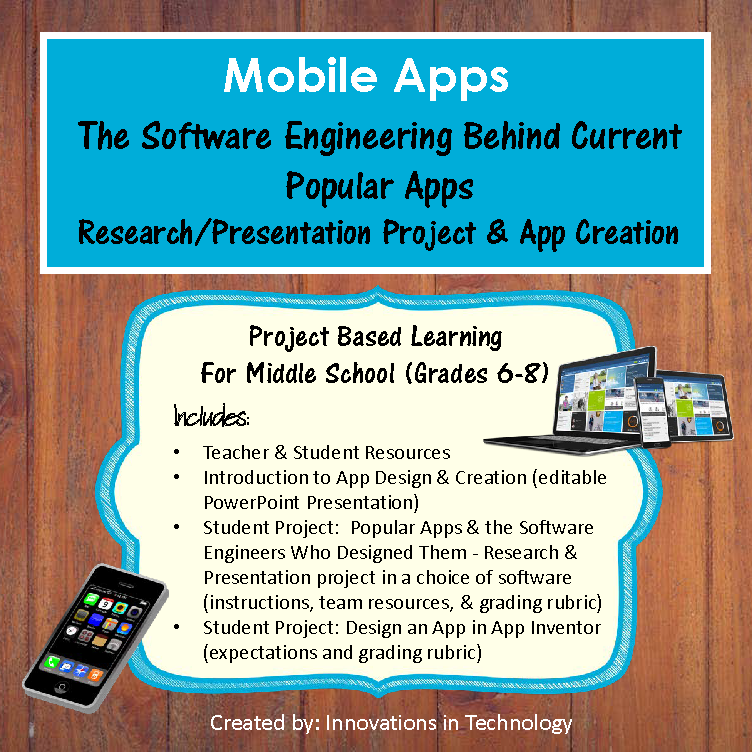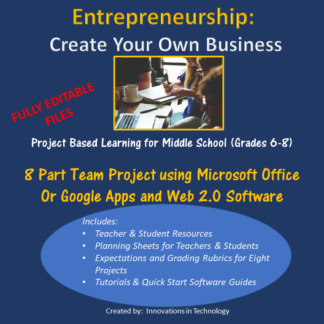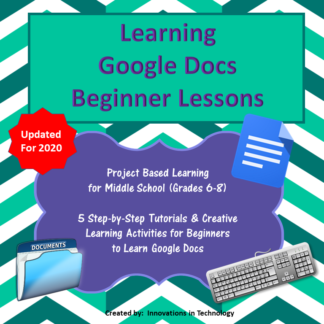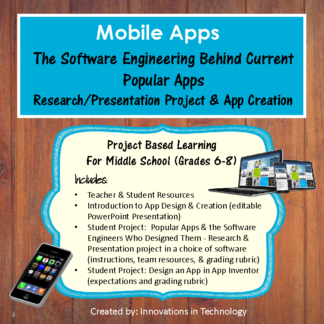Description
Students love their phones and all the apps that are available for them! This lesson lets students research some of the most popular apps and learn more about the software engineers who created them, and then create an app of their own. A Microsoft PowerPoint presentation starts the lesson as students learn about how apps are designed. Next, students work individually, with a partner, or in small groups to research an assigned app and create a presentation in their choice of software (suggestions and web tutorials are included). Next, students present their findings to the class. Finally, students work together to create their own app, using App Inventor (free software from MIT). Links to teacher instructions for App Inventor set up (provided by MIT) are included in the provided teacher resources below. All files are fully editable, allowing the teacher to customize the lessons. Additional resources and extension lesson ideas include free sites for students to create their own mobile app.
Perfect for a technology, engineering, or business class, this project was created for grades 7-8 but could easily be adapted for older students.
Files Included with this Lesson
• Teacher & Student Notes and Resources
• Introduction to App Design & Creation PowerPoint Presentation (fully editable)
• App List for Assignment (fully editable in MS Word)
• Popular Apps and the Software Engineers(s) Who Designed Them – Individual Project Instructions, Expectations and Grading Rubric (fully editable in MS Word)
• Popular Apps and the Software Engineers(s) Who Designed Them – Partner/Team Project Instructions, Expectations and Grading Rubric (fully editable in MS Word)
• Project Sign Up Sheet – 3 versions: individual, partner and team (fully editable in MS Word)
• Creating an App in AppInventor – Project Expectations and Grading Rubric (fully editable in MS Word)
Total Pages: 33
Teaching Duration: 6-9 Days
**************************************************************************
Connect with us for free technology tips, resources and curriculum:
Follow our blog
Follow us on Facebook
Follow us on Pinterest





